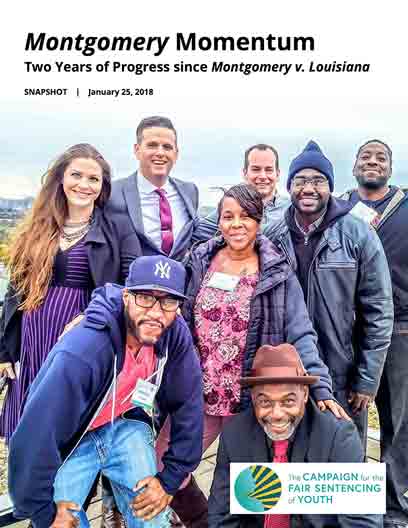Two years after Montgomery, progress and work to be done
On January 25, 2016 – two years ago today – the United States Supreme Court decided Montgomery v. Louisiana, giving hope and a chance for life outside of prison to individuals sentenced to life without parole for offenses committed as children.
When the Supreme Court decided Montgomery, over 2,600 individuals in the U.S. were serving juvenile life without parole (JLWOP), a sentence only imposed in the United States. In the two years since, seven states and the District of Columbia have banned JLWOP, and the number of individuals serving JLWOP has been cut in half, both through resentencing hearings and state legislative reform. Hundreds are coming home, and in fact, it was announced this week that former juvenile lifer Kempis Songster is going to the Super Bowl as a guest of Philadelphia Eagle Malcolm Jenkins.
On the other hand, many other juvenile lifers, including Mr. Montgomery himself, remain incarcerated and have not been given the meaningful opportunity for release that this decision promised. To illuminate some of this, we’ve created a snapshot that highlights both the progress we’ve made and the challenges that remain. It includes information about resentencings and state legislative accomplishments, portraits of juvenile lifers returning home, details about the uneven implementation of Montgomery, and recommendations for future reform. Read it in full here:




